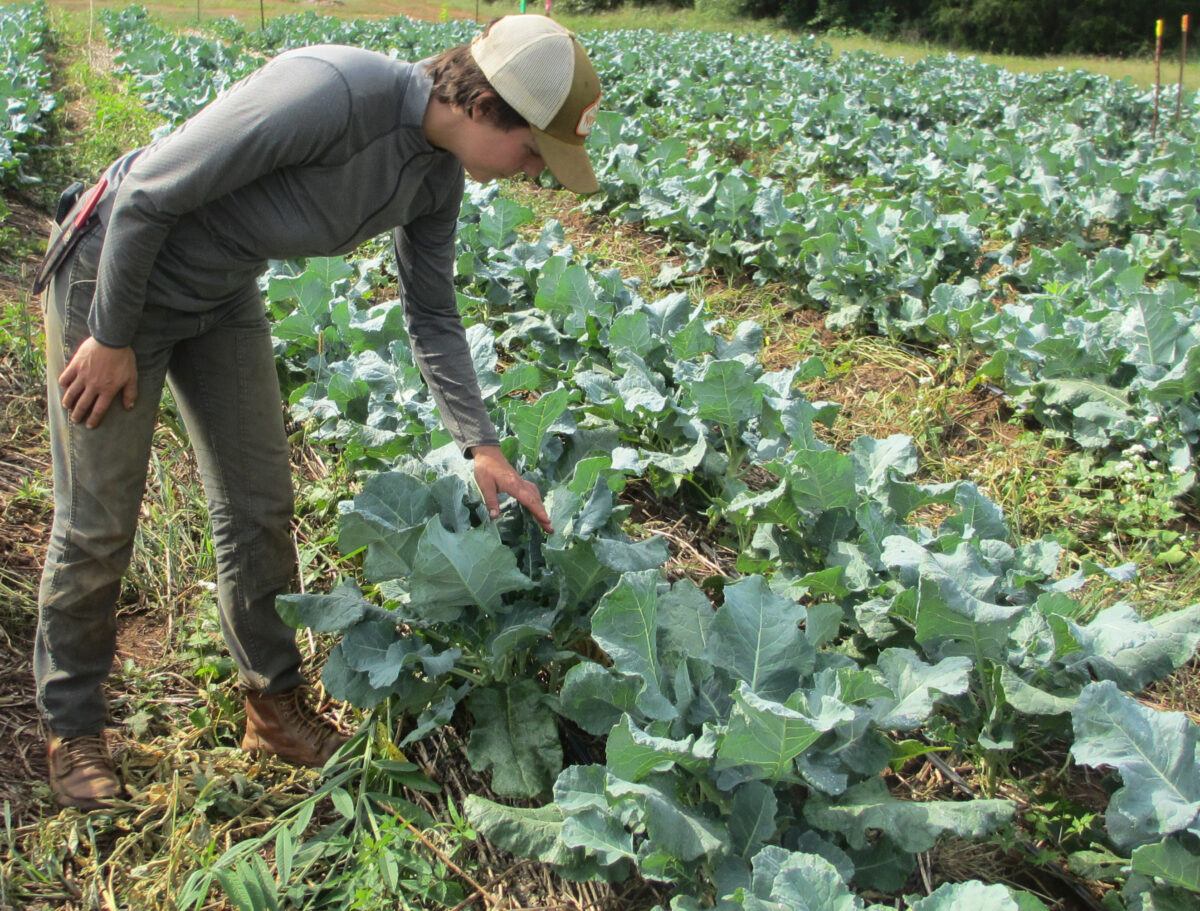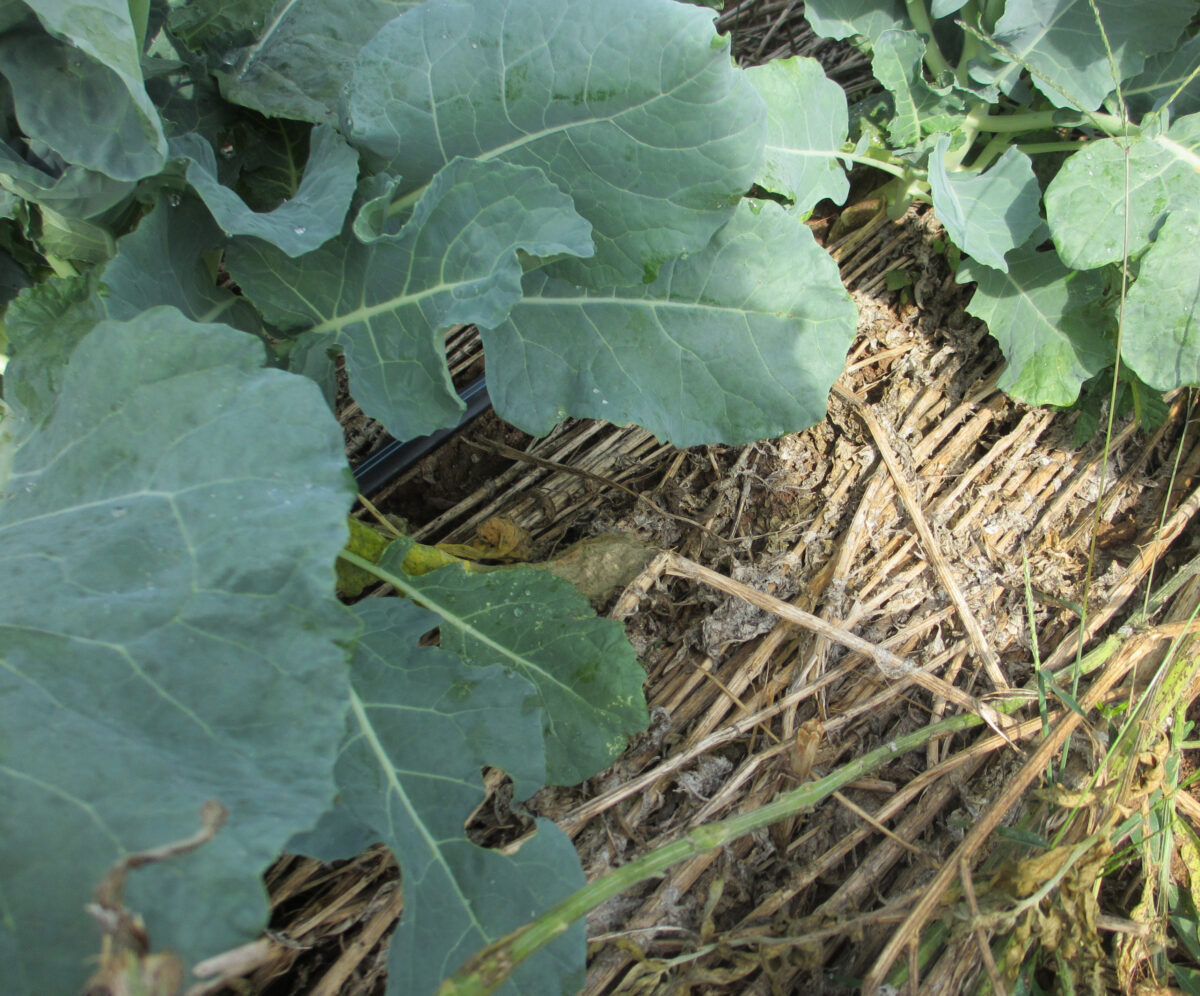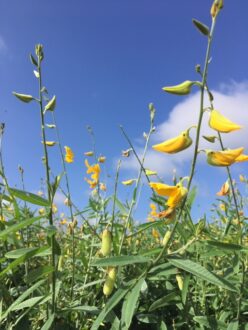CHESTER, South Carolina – Farmers with a certified organic diversified vegetable farm in South Carolina are seeing some success with using sunn hemp as a crimped cover crop to suppress weeds in fall brassica crops.
Wild Hope Farm, located in Chester, S.C., received a Southern Sustainable Agriculture Research and Education (SSARE) Producer Grant to explore summer cover crop mixes for organic no-till broccoli.
“We’ve had an interest in trying out crimped summer cover crops for fall crop production for a long time, and the SARE grant gave us the opportunity to explore treatment mixes for fall broccoli plantings,” said farm manager Rachel Klein.

In the study (FS20-326), “Summer Cover Crops for Organic No-till Broccoli,” five summer cover crop treatments were implemented in a no-till broccoli field: Tilled bareground after sunn hemp; sunn hemp crimped prior to cash crop planting; sunn hemp and millet crimped prior to cash crop planting; sunn hemp, soybeans and buckwheat crimped prior to cash crop planting; and sunn hemp, millet and buckwheat crimped prior to cash crop planting.
After one year of research, Klein and her crew found that the beds with cover crop mixes appeared to perform the best at suppressing weeds, compared with sunn hemp alone or the tilled treatment. However, Klein found that the timing of cover crop termination and weight of the roller crimper is important to prevent the reseeding and regrowth of the cover crops.
“Some regrowth of cover crops was due to not timing the crimping of soybeans, millet and buckwheat correctly. We also theorize that the roller-crimper could have been too heavy, causing it to cut some stems and stimulate side shoot growth in both the sunn hemp and the buckwheat.” said Klein.

Klein indicated that sunn hemp doesn’t perform well in smothering weeds right out of the gate, but she found that over time the sunn hemp outperforms the other cover crops for effective weed control. Most annual weeds have been controlled well, but Klein has struggled with the presence of perennial weeds such as horse nettle and dock.
“The buckwheat goes to seed quickly and doesn’t leave much residue. The millet also goes to seed fast and can become a weed if not controlled properly, but the plots with millet this year did create a much thicker mulch mat than sunn hemp alone,” said Klein.
In addition to weed suppression, yields were highest in the sunn hemp and millet plot. “We keep going back to the sunn hemp as our base cover crop. We have seen very different performance of the millet across the two years based on its response to drought, so we’d love to continue exploring what a sunn hemp and millet mix, or another grass cover can do,” said Klein.
Wild Hope Farm produces 12 acres of certified organic vegetables for a 350-member CSA. The farm focuses on cover crops and poultry litter for soil fertility and weed suppression, and is also exploring ways to improve roller crimped no-till production for main season cucurbit plantings. If a successful mix of summer cover crops is identified for fall production, it would protect the farm’s soil from harsh late summer rains and increase the total production of no-till plantings on the farm.
To learn more about Wild Hope Farm, visit https://www.wildhopefarm.com/
Published by the Southern Region of the Sustainable Agriculture Research and Education (SARE) program. Funded by the USDA National Institute of Food and Agriculture (NIFA), Southern SARE operates under cooperative agreements with the University of Georgia, Fort Valley State University, and the Kerr Center for Sustainable Agriculture to offer competitive grants to advance sustainable agriculture in America's Southern region. This material is based upon work that is supported by the National Institute of Food and Agriculture, U.S. Department of Agriculture, through Southern Sustainable Agriculture Research and Education. USDA is an equal opportunity employer and service provider. Any opinions, findings, conclusions, or recommendations expressed in this publication are those of the author(s) and do not necessarily reflect the view of the U.S. Department of Agriculture.
